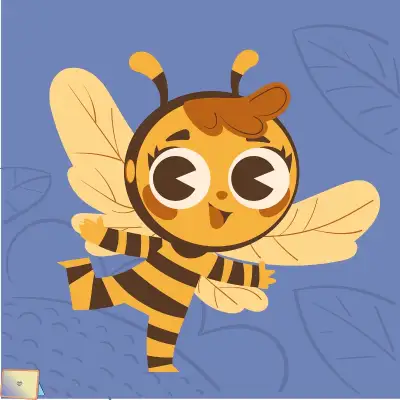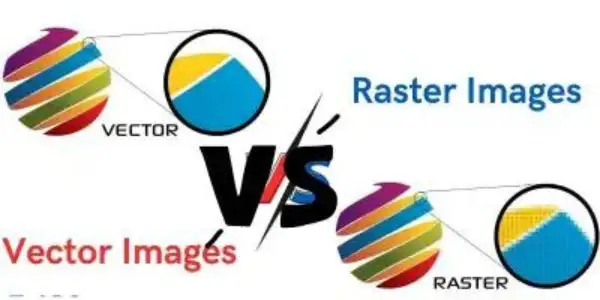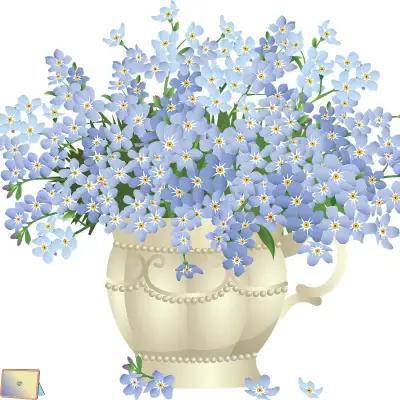What are vector files?
Vector files are images that can scale to any size without losing their quality and clarity. Vector graphics consist of mathematically defined lines, curves, and shapes. You can create and edit them using vector editing apps. For example, Adobe Illustrator and Inkscape. This is different from raster or bitmap graphics.
They pixelate and lose clarity when enlarged. With raster graphics, pixels grow in size when magnified and become visible to the naked eye. But, vectors can scale indefinitely and remain sharp. They use mathematical formulas to create lines and geometric shapes instead of pixels.

What are the common file formats for vector graphics?

The common file formats for vector graphics are:
AI (Adobe Illustrator) is the native file format of Adobe Illustrator. It is a popular vector editing app. It can store vector graphics, text, and images. It also supports layers, transparency, and effects. It is widely used by graphic designers and illustrators.
EPS (Encapsulated PostScript) is a standard file format for exchanging vector graphics. Different apps and platforms use it. It can contain both vector and raster data, and supports clipping paths, masks, and fonts. It is often used for printing and publishing purposes.
PDF (Portable Document Format) is a universal file format. It is for displaying and sharing documents across various devices and software. It can preserve the layout, fonts, and graphics of the original document. It can also contain both vector and raster data. It is widely used for e-books, forms, reports, and presentations.
SVG (Scalable Vector Graphics) is an XML-based file format. People use it to create and display vector graphics on the web. You can edit it with any text editor, and you can animate, style, and script it with CSS and JavaScript. Most modern browsers and web standards support it.
These are some of the most common types of vector file formats, but there are also others, such as CDR, WMF, and PLT. You can learn more about them by checking out the web search results.
What are the advantages of using vector graphics?
Some of the advantages of using vector graphics are:
They have infinite resolution. They can scale them to any size without losing quality or clarity.
They are lightweight, which means they have small file sizes and can be easily shared and stored.
They are editable. This means they can be easily manipulated, modified, and reused with vector editing apps.
They are multipurpose. You can use them for various design projects. For example, logos, icons, illustrations, and animations.
They can produce very realistic results. This means they can create smooth curves, gradients, shadows, and effects. These look like real-world objects.
These are some of the main benefits of using vector graphics. Other features include the ability to animate, edit with code, and interact. If you want to learn more about vector graphics and how to use them, you can check out the web search results. You’ll find more information there.
What are the disadvantages of using vector graphics?
Some of the disadvantages of using vector graphics are:
They have limited detail. Vector graphics cannot represent as much detail as raster graphics. This is especially true for complex images like photographs.
They are complex, so they can be difficult to create and edit. They need specialized software and skills.
They have limited compatibility. All software applications and platforms may not support them. We may need to convert them to other formats.
Vector graphics cannot capture the subtle variations of color, texture, and lighting. Raster graphics can. As a result, they are unsuitable for realistic images.
These are some of the main drawbacks of using vector graphics. There may be others depending on the specific project and purpose. If you want to learn more about vector graphics and how to use them, you can search the web for more information.
What is the difference between vector and raster graphics?

The composition of vector and raster graphics differs. Pixels make up raster graphics, while paths make up vector graphics. A pixel is a tiny square of color that forms part of an image. A path is a mathematical formula that defines a line, curve, or shape. Raster graphics are more suitable for displaying complex images like photographs. But, they lose quality when resized or zoomed in. Vector graphics are better for creating simple images like logos, icons, or illustrations. They can scale to any size without losing quality or resolution.
How can I convert a vector image to a raster file?
To convert a vector image to a raster file, you will need to use an app or an online tool that can perform the conversion. There are many options available. For example, Adobe Photoshop, Online Image Vectorizer, Convertio, or Vector Magic. Each tool has its own features and steps to follow. You will need to choose the one that suits your needs and preferences.
Here are some general steps to convert a vector image to a raster file:
Open the app or the online tool and upload or import the vector file that you want to convert. The common vector file formats are .ai, .eps, .pdf, and .svg.
Choose the output format for the raster file. The common raster file formats are .jpg, .png, .bmp, and .gif.
Adjust the settings for the conversion. This includes the resolution, quality, size, and color mode of the raster file. You may also apply some effects or filters to the raster image if you want.
Click the convert button and wait for the process to finish. You can then download or save the raster file to your device or cloud storage.
Can you recommend some free online tools for vectorizing images?

Sure, I can recommend some free online tools. They can help you convert raster images into vector graphics. Here are some of the options that you can try:
Vectorizer is a free online service. It provides high-quality vectorization of raster images in SVG format. You can upload up to 20 images at a time and adjust the settings for the conversion. You can also apply some effects and filters to the vector images.
Pixelied is a free online image editor. It lets you easily customize and vectorize images. You can upload your images in JPG or PNG format, or use free stock images. You can also add captions, borders, effects, and filters to your images. To vectorize your image, you just need to download it in SVG format.
Vectorize Image Online: Here are 12 free online vector editors. You can use them to create and edit vector graphics. Some of the tools are Vectorizer, Pixelied, Vectr, Boxy SVG, and more. Each tool has its own features and advantages. You can choose the one that suits your needs and preferences.
This is another list of free offline and online vector editors. You can use them to create vector illustrations. Some of the tools are Inkscape, Adobe Illustrator, Sketch, Gravit Designer, and more. Each tool has its own capabilities and limitations. You can compare and contrast them before using them.
Vectorizer.AI is a free online tool. It uses artificial intelligence to vectorize images. The vectorization is in full color and fully editable. You can upload your images in JPG, PNG, or BMP format, and choose the output format from SVG, EPS, PDF, or DXF. You can also adjust the resolution, the quality, and the color mode of the vector image.
I hope these recommendations help you find the best tool for vectorizing images. You can check out web search results to learn more about vector graphics and how to use them.
Click Here To Learn How To Open Vector Files
How can I edit a PDF file with vector elements?
The ways to edit a PDF file with vector elements depend on the software and tools you have access to. Here are some of the options you can try:
Adobe Acrobat Reader: This is the official app for viewing and editing PDF files. You can use the Edit PDF tool to change the text, images, and shapes in the PDF file. You can also use the Comment tool to add annotations, highlights, and stamps
If you have the 2013 or 2016 version of Microsoft Word, you can open and edit PDF files directly in Word. You can use familiar Word features to change the font, color, size, and alignment of the text. You can also insert, delete, or resize images and shapes. You can also save the edited file as a PDF again
Vector Editors are apps. They allow you to create and edit vector graphics. Examples include Adobe Illustrator, Inkscape, CorelDRAW, and Sketch. You can import the PDF file into these apps and edit the vector elements as separate layers. You can also change the colors, gradients, strokes, fills, and effects of the vector elements.
Conversion Applications are online tools. They can convert PDF files to other formats. These formats include JPG, PNG, BMP, GIF, SVG, AI, and EPS. You can then edit the converted file with any image editor or vector editor of your choice. Some of the online tools you can use are Online Image Vectorizer, Convertio, or Vector Magic.
I hope this helps you find the best way to edit a PDF file with vector elements.
Frequently Asked Questions?
What are the advantages of using vector files?
Vector files are more versatile and flexible than raster files. You can resize them to any dimension without losing resolution. This makes them ideal for logos, illustrations, and more. They are also great for characters, business cards, packaging, and print ads. They also allow for smaller file sizes in some cases, since they do not need to store millions of pixels.
What are the common types of vector file formats?
The most common types of vector file formats are .ai (Adobe Illustrator), .eps (Encapsulated Postscript), .pdf (Portable Document Format), and .svg (Scalable Vector Graphics). Each format has its own features and compatibility with different apps and software.
How can I edit a vector file?
You will need a compatible app to edit a vector file. Compatible apps include Adobe Illustrator, Inkscape, CorelDRAW, and Sketch. These apps allow you to manipulate the lines, curves, and shapes that make up the vector image. You can also change the colors, gradients, strokes, fills, and effects of the vector elements.
I hope this summary helps you understand what vector files are and how to use them.
